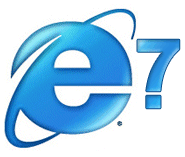 Now that IE7 has been distributed via Windows Update to thousands upon thousands of Microsoft customers and fanboys alike all over the world, we're seeing a whole bunch of sites with layouts that break because they are written with hacks and workarounds designed for IE6.
Now that IE7 has been distributed via Windows Update to thousands upon thousands of Microsoft customers and fanboys alike all over the world, we're seeing a whole bunch of sites with layouts that break because they are written with hacks and workarounds designed for IE6.
The news comes from a survey carried out by usability consultancy Etre, who remind us that Microsoft still have a 80% share of the web market with their Windows-integrated Internet Explorer browser.
Ironically, it's the standards-compliant sites that have the most problems because they are used to having to implement special cases for IE6 which are now obsolete in IE7, some of which are now counterproductive. Non standards-compliant sites were designed as shoddy code to work with a shoddy renderer, which IE7 still provides in its Quirks Mode for compatibility.
It is worth pointing out, however, that the general lack of adherence to web standards among the FTSE 100 companies may have insulated them somewhat from IE7's various bugs and glitches.
IE7 tends to struggle most with standards-compliant sites – particularly those using hacks and filters to achieve decent presentation in IE6. Given that most sites aren't standards-compliant, however, we think our results are pretty representative.
Although this development would appear to be a shout-out in favour of not writing with proper web standards in mind, in fact it merely highlights the damage done by Microsoft's past infractions with its famously naughty Internet Explorer browser. They're fixing the product now but the damage is (for the most part) done, and it'll take some time to recover.
Hopefully we can all use this as a lesson to avoid this sort of a mess coming up in the future. Standards compliance is good, and ignoring it will come around to bite you in the ass eventually, even if it takes the improvement of a bad browser to do so.